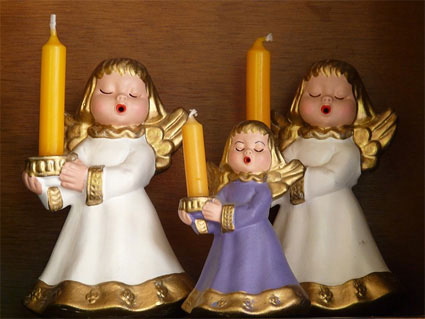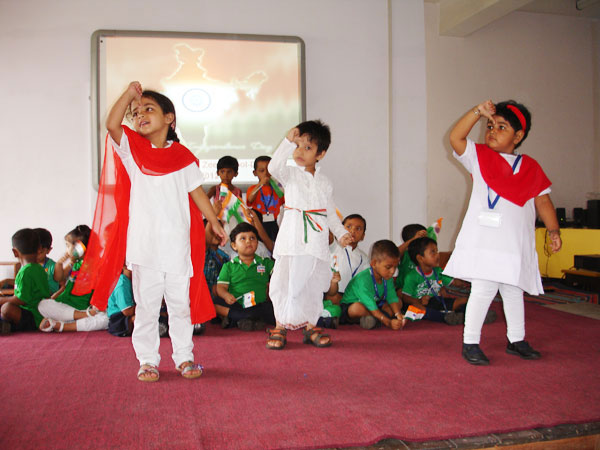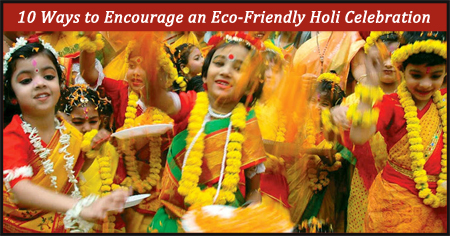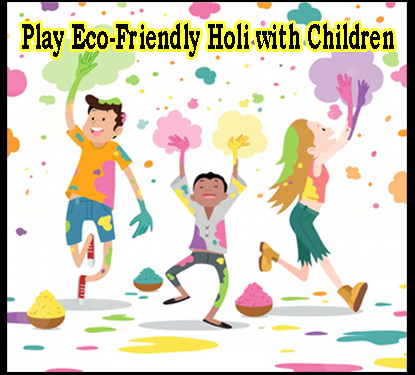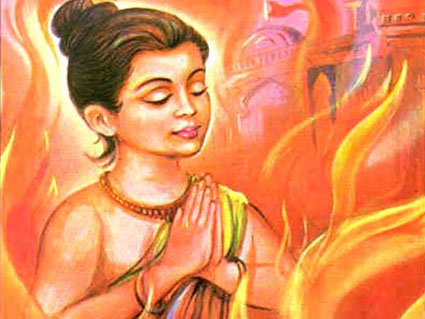Its October, and that means its the month of dance, much and revelry! Navratri is celebrated from the first to ninth date of Ashwin Shukla Paksha of the Hindu Calendar, which usually falls in October. This is essentially a religious festival. In this articleShaiputriBramachariniChadraghantaKushmandaSkandamataKartyayaniKalaratriMahagauriSiddhihatri Goddesses Worshiped During the festival of navratri, the goddess Durga, who is a form of goddess Parvati, is worshiped in her nine forms. Shaiputri: This daughter of Himavan is worshiped on the first night of Navratri. She sits upon a bull, and carries a trident in one hand, and a lotus in the other. Bramacharini: She is the personification of loyalty and love. Chadraghanta: She sits on a tiger, and has three eyes and ten arms. She is a warrior goddess. Kushmanda: This shakti is worshiped on the fourth night. She has eight arms, which hold the rosary and weapons. She also sits on a tiger. Skandamata: Skandamata sits on a lion. Her son is in her lap. She has four arms and three eyes. Kartyayani: This shakti is worshipped on the sixth night. She sits atop a lion and has three eyes and eight arms. All her arms hold weapons. She is the daughter of the sage Katya. Kalaratri: This black skinned goddess has four hands. She sits atop a donkey. Mahagauri: As the name implies, this shakti has the fairest complexion of all other forms of Ma Durga. Her vahana (vehicle) is a bull. Siddhihatri: The eight Durga-shakti sits on a lotus. The main temples that are visited during the Navratri are the shaktipithas. According to legend, when Lord Shiva heard of the death of Sati he was enraged and unleashed his fury way of immense destruction. To stop this destruction, Lord Vishnu separated the body of Sati into sections, which fell in fifty-two places. These are the shaktipithas. At home, everyone celebrates this festival by paying homage to the goddesses. People pray at home, visit temples and keep a 9-day fast, during which time they give up non-vegetarian food, eggs and alcohol. Public celebrations are held in the form of dandiyas. Men and women wear traditional attire and celebrate by dancing late into the night. The beats are given by clapping (garba), or with sticks (dandiya raas). This festival is held on a lavish scale in Gujarat, and in other cities like Mumbai, which have a substantial Gujarati population. After the 9th day of the Navtratri festival, Dussera is celebrated. This festival is celebrated by a public burning of an effigy of Lord Ravana. It signifies the triumph of good over evil.
It's October, and that means it's the month of dance, much and revelry! Navratri is celebrated from the first to ninth date of Ashwin Shukla Paksha of the Hindu Calendar, which usually falls in October. This is essentially a religious festival.
Goddesses Worshiped
During the festival of navratri, the goddess Durga, who is a form of goddess Parvati, is worshiped in her nine forms.
Shaiputri:
This daughter of Himavan is worshiped on the first night of Navratri. She sits upon a bull, and carries a trident in one hand, and a lotus in the other.
Bramacharini:
She is the personification of loyalty and love.
Chadraghanta:
She sits on a tiger, and has three eyes and ten arms. She is a warrior goddess.
Kushmanda:
This shakti is worshiped on the fourth night. She has eight arms, which hold the rosary and weapons. She also sits on a tiger.
Skandamata:
Skandamata sits on a lion. Her son is in her lap. She has four arms and three eyes.
Kartyayani:
This shakti is worshipped on the sixth night. She sits atop a lion and has three eyes and eight arms. All her arms hold weapons. She is the daughter of the sage Katya.
Kalaratri:
This black skinned goddess has four hands. She sits atop a donkey.
Mahagauri:
As the name implies, this shakti has the fairest complexion of all other forms of Ma Durga. Her vahana (vehicle) is a bull.
Siddhihatri:
The eight Durga-shakti sits on a lotus.
The main temples that are visited during the Navratri are the shaktipithas. According to legend, when Lord Shiva heard of the death of Sati he was enraged and unleashed his fury way of immense destruction. To stop this destruction, Lord Vishnu separated the body of Sati into sections, which fell in fifty-two places. These are the shaktipithas.
At home, everyone celebrates this festival by paying homage to the goddesses. People pray at home, visit temples and keep a 9-day fast, during which time they give up non-vegetarian food, eggs and alcohol.
Public celebrations are held in the form of dandiyas. Men and women wear traditional attire and celebrate by dancing late into the night. The beats are given by clapping (garba), or with sticks (dandiya raas). This festival is held on a lavish scale in Gujarat, and in other cities like Mumbai, which have a substantial Gujarati population.
After the 9th day of the Navtratri festival, Dussera is celebrated. This festival is celebrated by a public burning of an effigy of Lord Ravana. It signifies the triumph of good over evil.


















